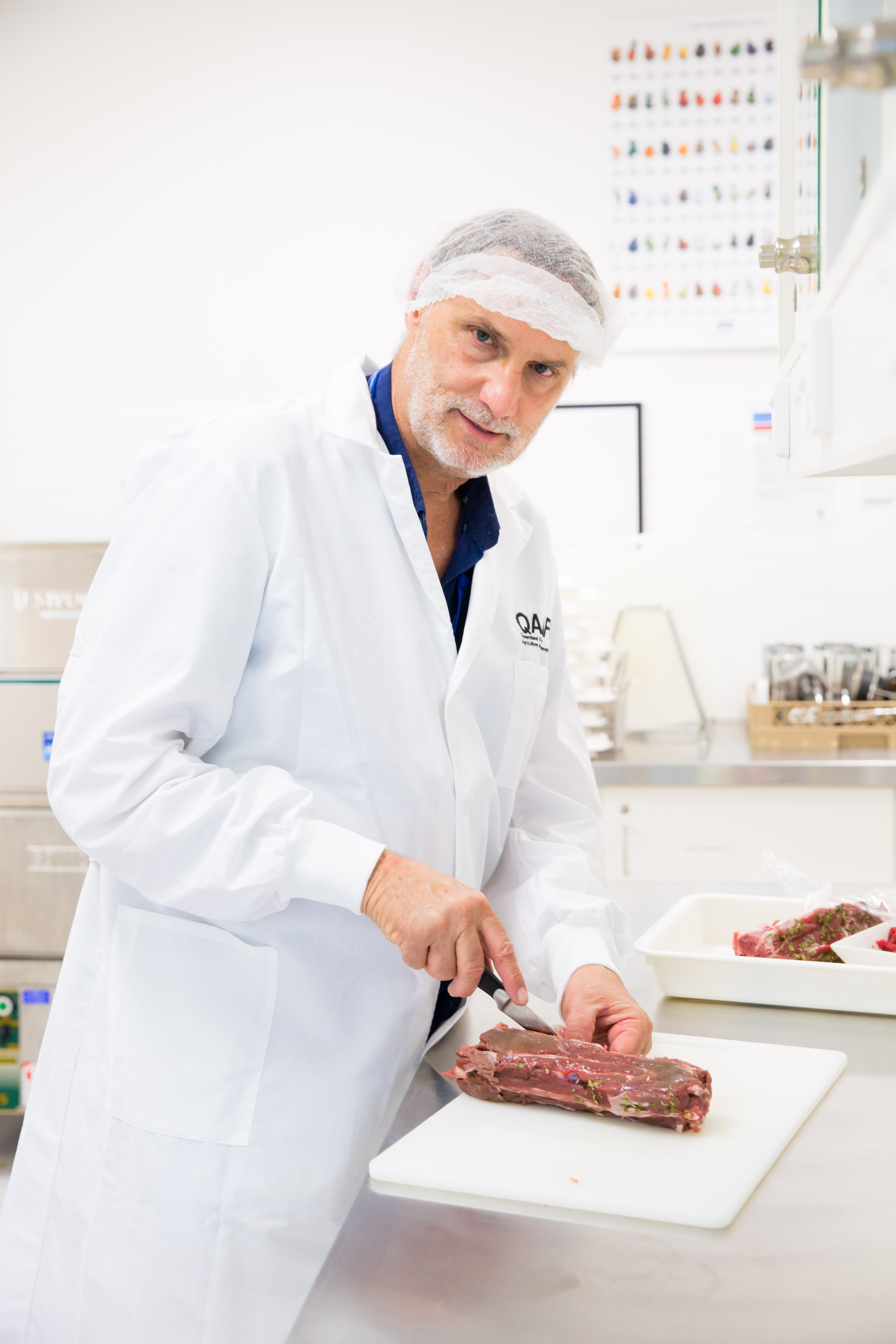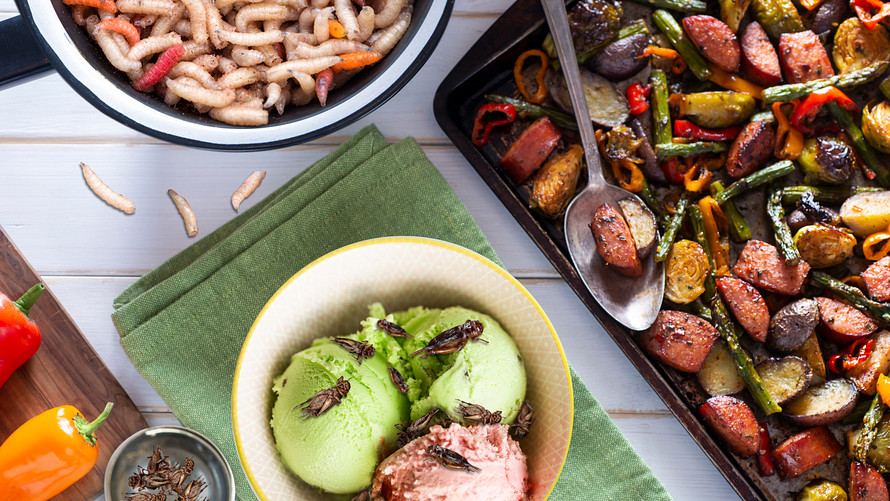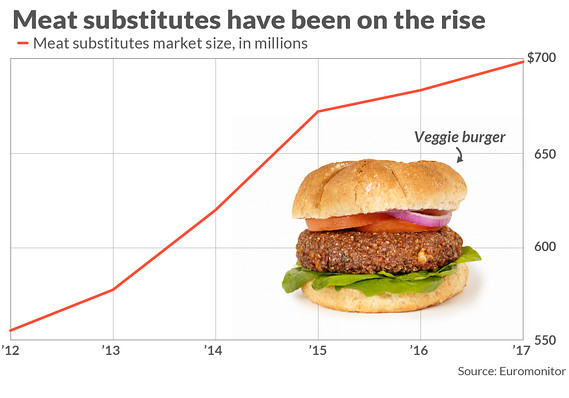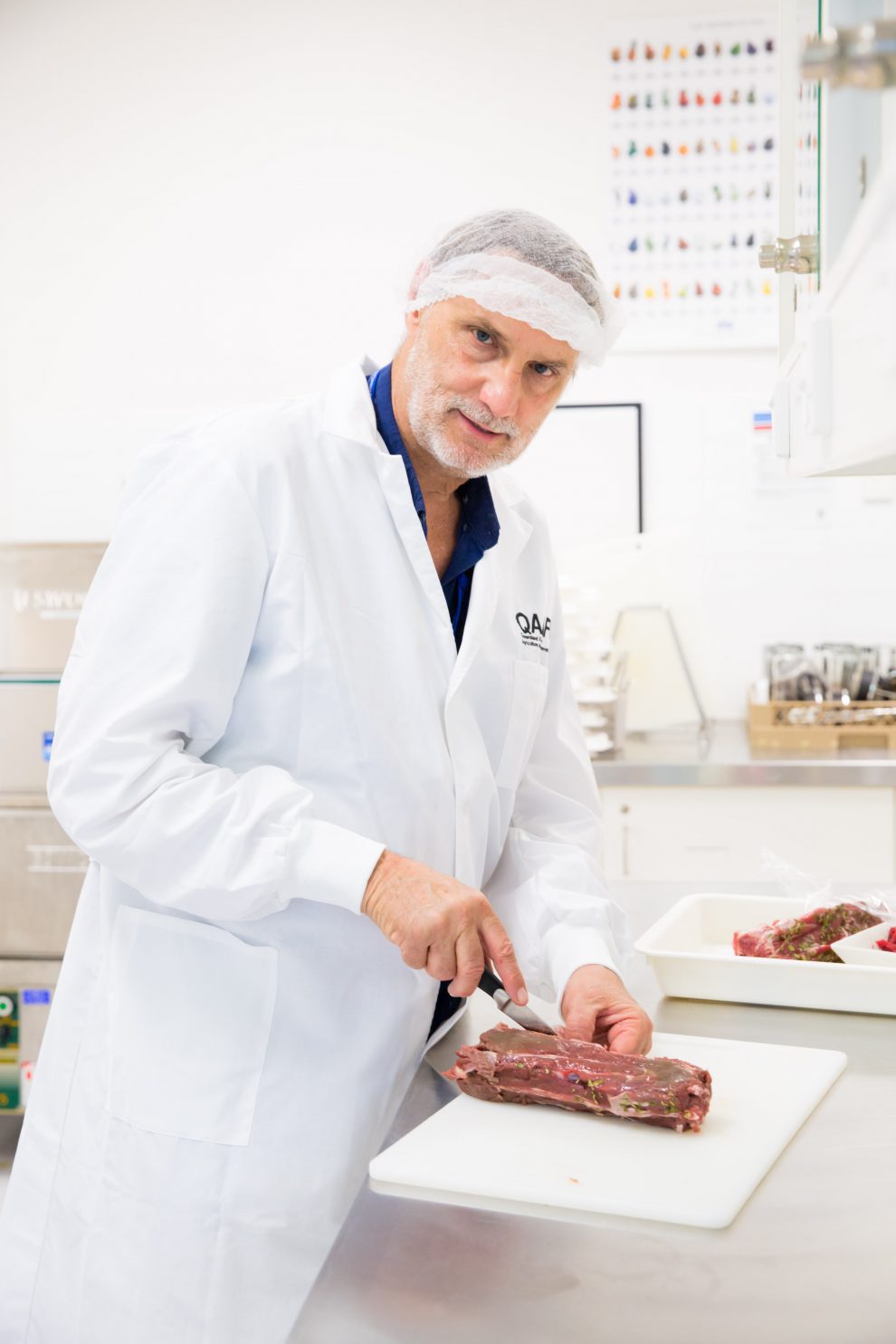Some food for thought this Memorial Day Weekend: “Would you eat a commercial sausage made from maggots? What about other insect larvae and even whole insects like locusts?”
University of Queensland science professor, Louwrens Hoffman, recently posed these questions, and this month unveiled some stomach-churning, high-concept alternatives to meat and dairy. He said the livestock industry can’t continue meeting the global demand for meat, and soon we will all have to swallow unusual alternatives. “The biggest potential for sustainable protein production lies with insects and new plant sources,” he said. “For example, one of my students has created a very tasty insect ice cream.”
‘Larvae from the black soldier fly are a perfect protein source for chicken production.’
People are opening their wallets to new innovations in meatless products and, perhaps, expanding their palates. Earlier this month, shares of Beyond Meat BYND, +5.76% soared after the company’s IPO; the company produces plant-based “meat” sold at Whole Foods AMZN, -2.38% and the restaurant chain TGI Friday’s. Hoffman said it’s an industry that will continue to grow. “An overpopulated world is going to struggle to find enough protein unless people are willing to open their minds, and stomachs, to a much broader notion of food,” he said.
Chicken that contains 15% larvae still tastes good and has the same juiciness, tenderness and aroma, he said. Insect protein is already sold in some health-food stores, but people need to get real and start incorporating these meatless alternatives into existing food products, he said. “Poultry is a massive industry worldwide and the industry is under pressure to find alternative proteins that are more sustainable, ethical and green than the grain crops currently being used,” Hoffman said.
The Queensland Alliance for Agriculture and Food Innovation at the University of Queensland has a mission to create a more sustainable food culture. Larvae (maggots) from the black soldier fly (Hermetia illucens) are a perfect protein source for chicken production, for instance. Livestock farming requires massive resources. The production and transportation of a beef steak uses 160 time more land, water and fuel than a vegetarian dish, according to the nonprofit Four Paws US.

Also see: Beyond Meat is going public: 5 things you need to know
Many meatless products are already made from soy plants and genetically-engineered yeast (a fungus). Burger King QSR, -0.25% said this week it will roll out its meatless Whopper — a vegetarian patty by Impossible Foods that tastes and bleeds like real beef — nationwide. The meatless Whopper costs about $1 more than its beef brother, the original Whopper. It’s the latest fast-food chain to jump on the meatless bandwagon following others like White Castle and Carl’s Jr.
Meatless burgers are often made from plant-based soy and fungus products like genetically-engineered yeast.
The world’s largest food company, Nestle NSRGY, -0.08% also recently announced plans to debut plant-based burgers across supermarkets in the U.S. and Europe later this year. “The Awesome Burger” will be on sale where Sweet Earth products are sold. The country’s largest meat producer, Tyson Foods TSN, +0.55% the maker of hot dogs and chicken nuggets, will soon offer vegan protein. There’s even a meatless version of canned tuna.
Food companies are also growing meat in labs. Last year, German drugmaker Merck MRK, +0.05% and European meat processing group Bell Food Group invested $8.8 million in Netherlands-based Mosa Meat, which makes beef by growing cattle cells. Finless Foods’ bluefin tuna is grown from tuna cells grown in a lab. It won’t come cheap and the Berkeley, Calif.-based startup plans on selling the lab-grown meat to high-end restaurants, The Wall Street Journal reported.
 MarketWatch photo illustration/iStockphoto
MarketWatch photo illustration/iStockphoto
There’s demand for fake meat. Retails sales of plant-based foods in the U.S. that replace animal products grew by 17% to $3.7 billion in 2018. The total U.S. plant-based retail market is worth more than $4.1 billion, according to Nielsen and the Good Food Institute. There’s good reason for finding substitutes: Relying less on animal agriculture can help the environment, too, considering land used for grazing and raising livestock emits more greenhouse gases into the atmosphere.
Meat is the worst food product for producing greenhouse gases due to its production and transportation.
Up to 40% of food goes uneaten in the U.S. Americans throw away $165 billion in wasted food every year, according to Harvard Law School’s Food Law and Policy Clinic and the Natural Resources Defense Council (NRDC), a nonprofit environmental action group. Some 160 billion pounds of discarded food also clogs up landfills. “Food waste is responsible for over 7% of the world’s greenhouse gas emissions, making it a key challenge in tackling climate change,” the United Nations says.
Food production comes with a steep environmental cost. Meat is the worst food product for producing greenhouse gases due to its production, packaging, transportation and consumption, data from the Environmental Working Group concluded. Lamb is the worst offender, causing 39.2 kilograms of carbon dioxide emissions for every kilogram eaten. To put that in context: Lentils produce less than 1 kilogram of carbon dioxide for every kilogram eaten.
Hoffman said people shouldn’t balk at larvae and locusts. “It’s all pretty logical,” he said. “Chickens in the wild don’t eat feed preparations. They eat insects and larvae. And, while insects are largely foreign as a food in Western cultures, for many millions of people around the world they are a familiar part of the diet. There needs to be a better understanding of the difference between animal feed and human food, and a global reappraisal of what can constitute healthy, nutritional and safe food for all.”

(Jacob Passy and Jeanette Settembre contributed to this story.)









